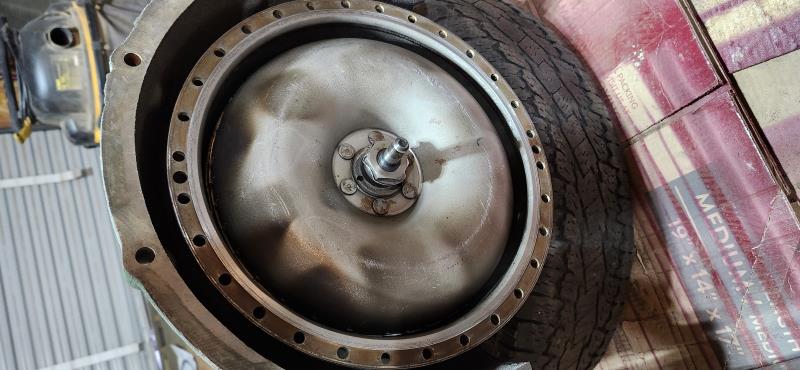|
Group: Forum Members
Last Active: Last Week
Posts: 1.8K,
Visits: 306.3K
|
 The photo is showing the torus cover (7910). That bolts directly to the flywheel with a large gasket to contain the fluid (see PARTS ILL above). The fluid contacts the flywheel also (unlike a more understood torque convertor). Without the gasket between the crank flange and flywheel, you will have leakage. One area where the Hydra-Matic differs from contemporary automatic transmissions is the fluid coupling, which is not a torque converter, but a torus. A torque converter uses a stator, which allows it to multiply the engine's torque; a torus does not have this feature. The use of a torus is part of the reason the Hydra-Matic has four speeds; first gear is extra low (3.82:1 on early units, 3.96:1 on later designs) to assist in accelerating from a stop in the absence of additional torque and fourth gear is 1.0:1, not overdrive as found in later four-speed automatics.
SOURCE - https://www.hemmings.com/stories/article/gm-hydra-matic TRY HERE - https://www.fatsco.net/
____________________________
|
|
Group: Forum Members
Last Active: Last Week
Posts: 1.8K,
Visits: 306.3K
|
See if this helps explain it - https://www.youtube.com/watch?v=GL6s2DwqH_0The above video is third in a series of five. The fifth video shows assembly and includes the torus assembly (towards end) showing the gasket placement in question.
____________________________
|